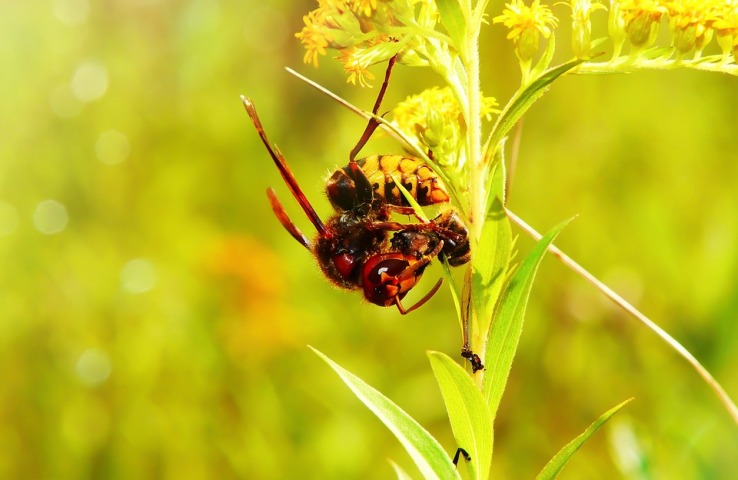SA Marks Biodiversity Day with Bold Push for Offsets and Sustainable Growth
The convergence of perspectives and expertise served one collective mission: to safeguard South Africa’s rich and fragile biodiversity while pursuing responsible and inclusive development.

- Country:
- South Africa
In a landmark event that underscored South Africa’s commitment to sustainable development and ecological integrity, the Department of Forestry, Fisheries and the Environment (DFFE) convened the National Biodiversity Offset Conference in collaboration with the United Nations Development Programme (UNDP), the South African National Biodiversity Institute (SANBI), and South African National Parks (SANParks). Held at the Development Bank of Southern Africa (DBSA) in Gauteng, the event coincided with the global celebration of the International Day for Biological Diversity, themed “Harmony with Nature and Sustainable Development.”
The conference brought together a wide cross-section of stakeholders — from government (across national, provincial, and municipal levels), academia, private sector leaders, environmental NGOs, and community representatives. The convergence of perspectives and expertise served one collective mission: to safeguard South Africa’s rich and fragile biodiversity while pursuing responsible and inclusive development.
South Africa: A Biodiversity Superpower Under Pressure
South Africa is globally recognised as one of only 17 megadiverse countries, home to unique species and ecosystems not found anywhere else on Earth. From the Cape Floristic Region to the Succulent Karoo, and the vast Savanna biome, its natural wealth is a cornerstone of national identity, cultural heritage, economic vitality, and climate resilience.
However, this ecological treasure trove is under siege from expanding urbanisation, agriculture, infrastructure development, and unsustainable resource extraction. According to the National Development Plan (NDP) 2030, the country is experiencing an "ecological deficit" — a condition where natural capital is being eroded faster than it can regenerate. Biodiversity loss is not just an environmental issue, but a developmental crisis.
Biodiversity Offsets: A Tool for Conservation and Development
Amid this growing urgency, the publication of the National Biodiversity Offset Guideline in June 2023 marked a pivotal moment. Issued under the National Environmental Management Act (NEMA), the Guideline provides a robust policy framework for managing and mitigating the ecological costs of development. It enforces a strict application of the mitigation hierarchy:
-
Avoid environmental harm
-
Minimise unavoidable impacts
-
Rehabilitate damaged ecosystems
-
And only as a last resort — Offset residual impacts
“The philosophy is not to halt development,” said a DFFE representative. “Rather, it’s to ensure development does not come at the irreversible expense of nature.”
When effectively implemented, biodiversity offsets can go beyond compensation — they can drive restoration, bolster protected area networks, connect fragmented habitats, and maintain vital ecosystem services like water purification, pollination, and carbon storage.
Global Goals, National Action
South Africa’s leadership in biodiversity finance aligns with its commitments under the Kunming-Montreal Global Biodiversity Framework (GBF) and the Sustainable Development Goals (SDGs). The Offset Guideline helps operationalise Target 19 of the GBF, which emphasizes mobilizing financial resources and aligning economic activity with biodiversity goals.
To ensure accountability and transparency, DFFE, in partnership with SANBI, SANParks, and UNDP, is rolling out a national biodiversity offset register and a dedicated online portal to track the performance of offset projects. This platform will allow public access to data on offset location, scope, conservation targets, and progress.
Additionally, the Biodiversity Finance Initiative (BioFin) — a joint UNDP and South African government project — is working to secure sustainable financing mechanisms to support long-term biodiversity conservation. These include exploring innovative instruments such as green bonds, conservation trust funds, and ecosystem service markets.
A Call to Stewardship
The conference’s message was clear: biodiversity is not a luxury—it is life-support infrastructure. The planet’s forests, grasslands, wetlands, and oceans are the foundations upon which our economy, food systems, health, and climate security rest.
The Honourable Minister of the Environment (DFFE), speaking at the event, said:
“Biodiversity offsets must be meaningful, measurable, and long-lasting. We are not trading away ecosystems; we are investing in nature-based resilience for generations to come.”
Panelists called on the private sector to integrate biodiversity risk into decision-making, urging financiers, developers, and industry leaders to partner with conservation entities. Academia and civil society were urged to enhance research, monitoring, and capacity-building. Communities, especially those living near biodiversity hotspots, were recognised as critical partners in co-managing and benefiting from conservation initiatives.
Looking Ahead: Offsetting as a National Imperative
As development pressures mount, biodiversity offsets are poised to play a critical role in reconciling economic growth with ecological preservation. However, experts cautioned against misuse or "greenwashing." The conference emphasized that offsets must not be treated as licenses to destroy, but as a safety net within a rigorous environmental impact assessment process.
Moving forward, DFFE intends to intensify capacity-building among provincial and municipal authorities to implement the Offset Guideline, including developing regional biodiversity offset frameworks and sector-specific offset standards for industries such as mining, infrastructure, and energy.
Harmony with Nature Is the Only Path Forward
As the world faces a biodiversity crisis and climate emergency, South Africa is demonstrating that harmony with nature is not just idealistic—it is essential. The National Biodiversity Offset Guideline offers a blueprint for transformative environmental governance, ensuring that development proceeds without robbing future generations of their natural inheritance.
The National Biodiversity Offset Conference concluded with a resounding call to action:
“Let every road we build, every city we expand, and every project we greenlight reflect our duty to nature. Because without biodiversity, there is no life.”
- READ MORE ON:
- biodiversity offsets South Africa
- DFFE biodiversity policy
- National Biodiversity Offset Guideline
- UNDP SANBI SANParks partnership
- South Africa ecological conservation
- International Day for Biological Diversity 2025
- BioFin South Africa
- Kunming-Montreal Global Framework
- sustainable development South Africa
- DBSA biodiversity conference









